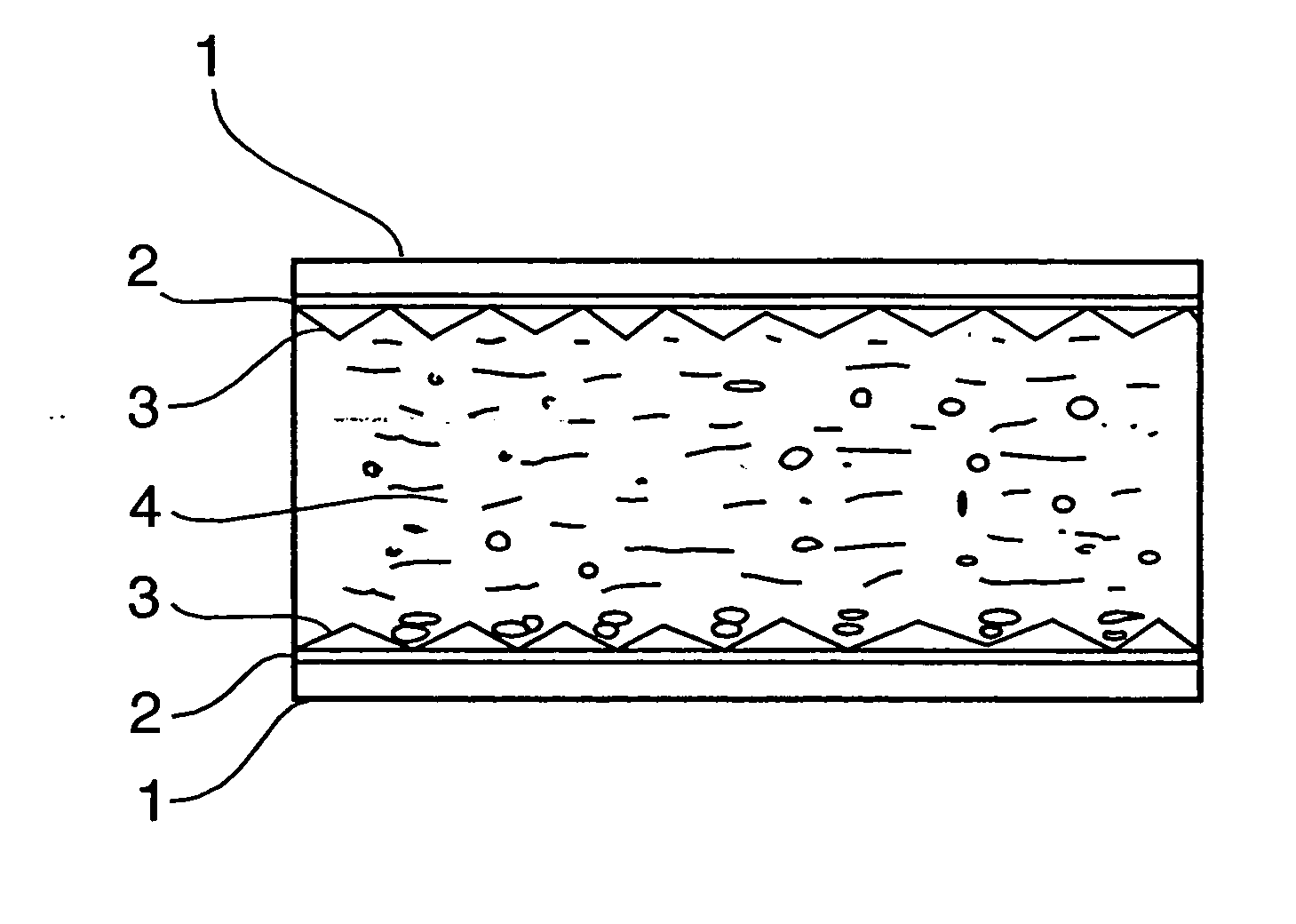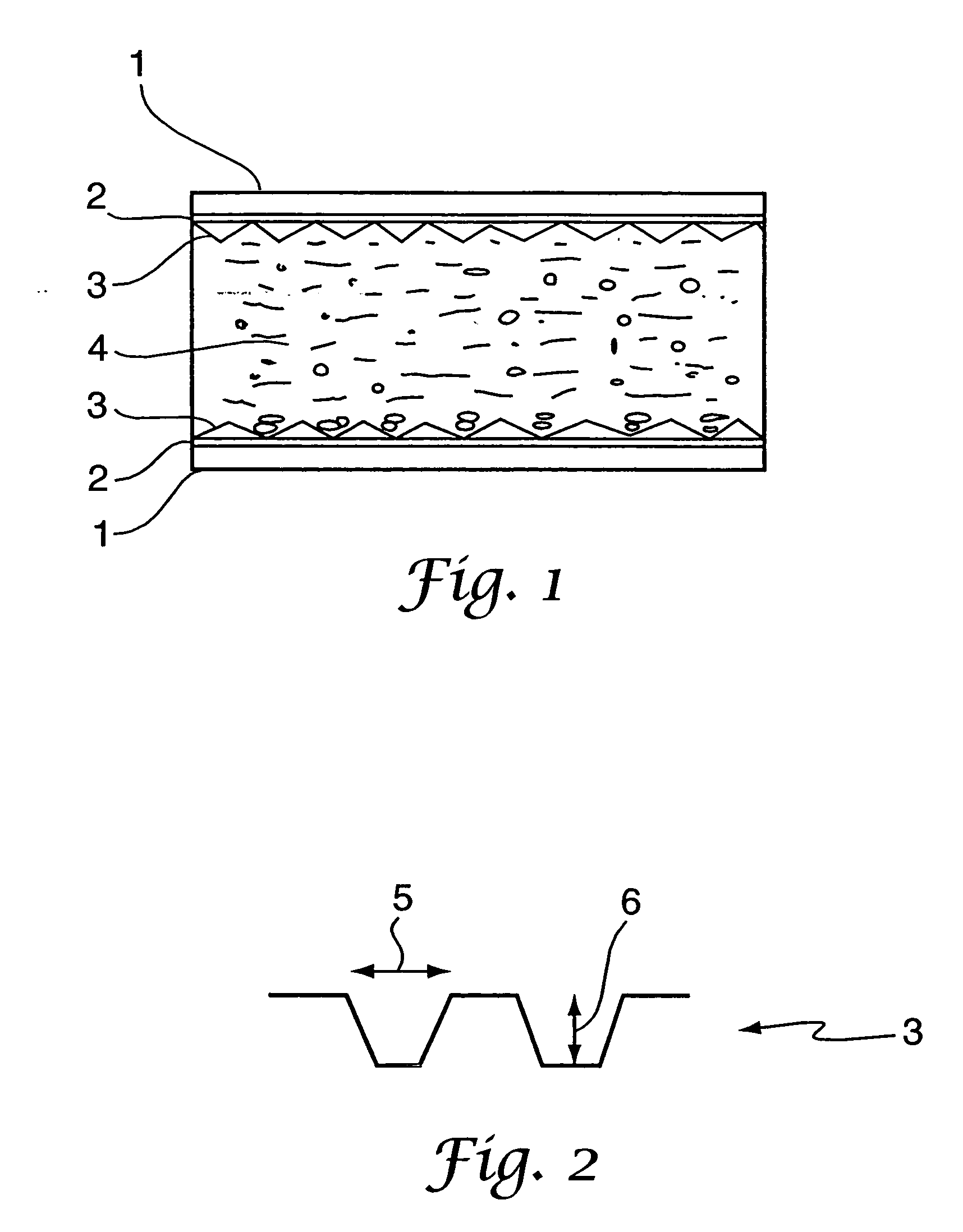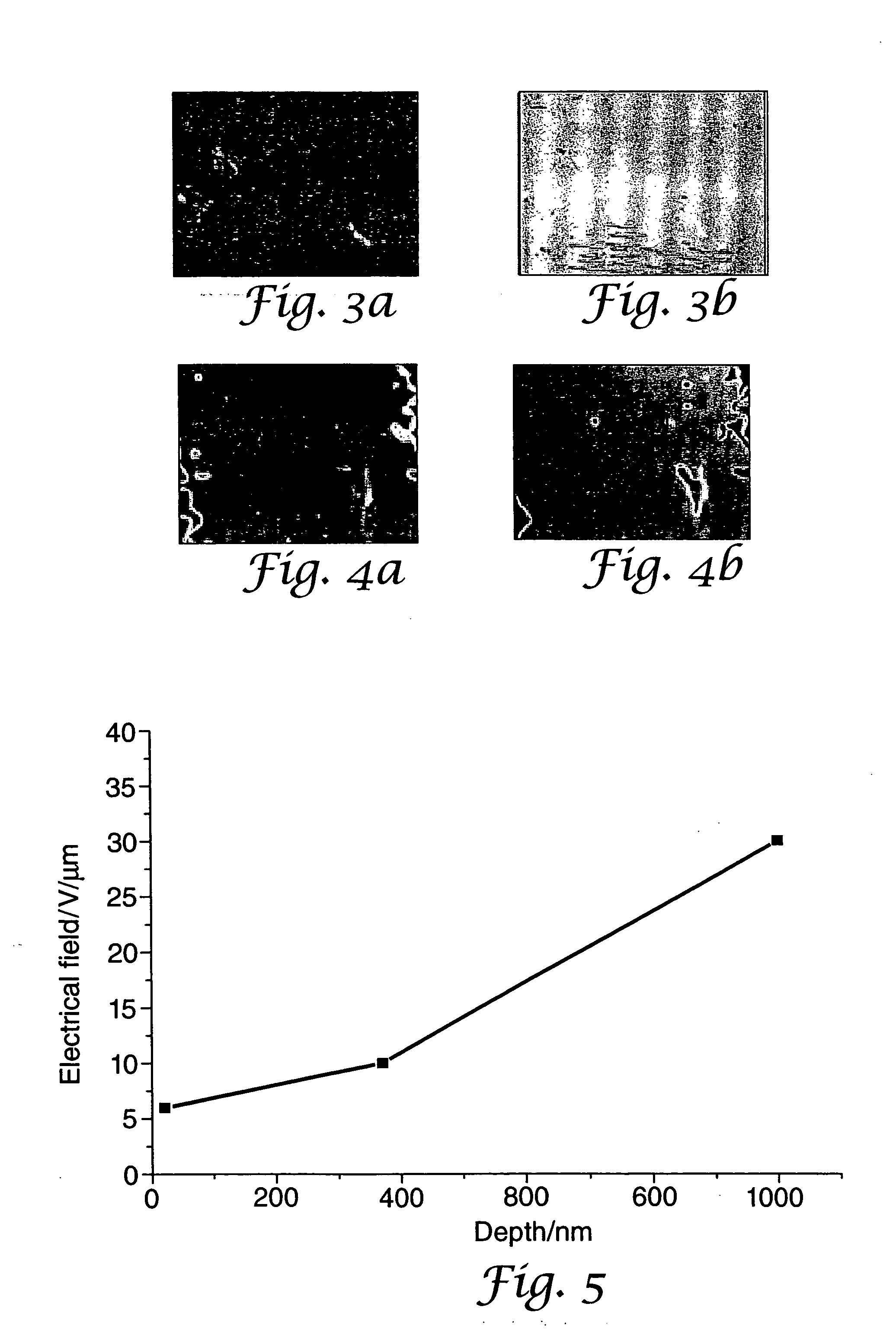Bistable nematic liquid crystal device
a liquid crystal device and nematic technology, applied in non-linear optics, instruments, optics, etc., can solve problems such as structural defects, room temperature materials, and inability to stabilize, and achieve the effect of reducing the number of nematic liquid crystal devices
- Summary
- Abstract
- Description
- Claims
- Application Information
AI Technical Summary
Benefits of technology
Problems solved by technology
Method used
Image
Examples
Embodiment Construction
[0039] The display cell of FIG. 1 comprises opposed spaced-apart glass or plastic plate substrates 1, each provided with transparent electrode patterns 2 on its inner surface. Alignment grating layers 3 are provided on each inner surface, on top of the electrodes 2. The grating layers 3 have a pitch 5 and a depth 6. A layer of a nematic LC material 4 is sandwiched between the substrates 1, having dissolved in it a photocurable monomer. Curing of the monomer by shining UV light through only one of the substrates 1 causes a polymer coating to form on the alignment structure 2 on that substrate. The cell changes after polymerisation from a symmetrical cell to an unsymmetrical cell.
[0040] Experimentally we have used monogratings and post arrays with 200, 400 and 1000 nm depth. The thickness of the cells was varied between 2 to 5 μm using photocured glue with ball spacers on the boundary of the cell between the substrates. The cells were filled with a LC of positive dielectric anisotrop...
PUM
| Property | Measurement | Unit |
|---|---|---|
| glass transition temperature | aaaaa | aaaaa |
| depth | aaaaa | aaaaa |
| grating depth | aaaaa | aaaaa |
Abstract
Description
Claims
Application Information
 Login to View More
Login to View More - R&D
- Intellectual Property
- Life Sciences
- Materials
- Tech Scout
- Unparalleled Data Quality
- Higher Quality Content
- 60% Fewer Hallucinations
Browse by: Latest US Patents, China's latest patents, Technical Efficacy Thesaurus, Application Domain, Technology Topic, Popular Technical Reports.
© 2025 PatSnap. All rights reserved.Legal|Privacy policy|Modern Slavery Act Transparency Statement|Sitemap|About US| Contact US: help@patsnap.com



